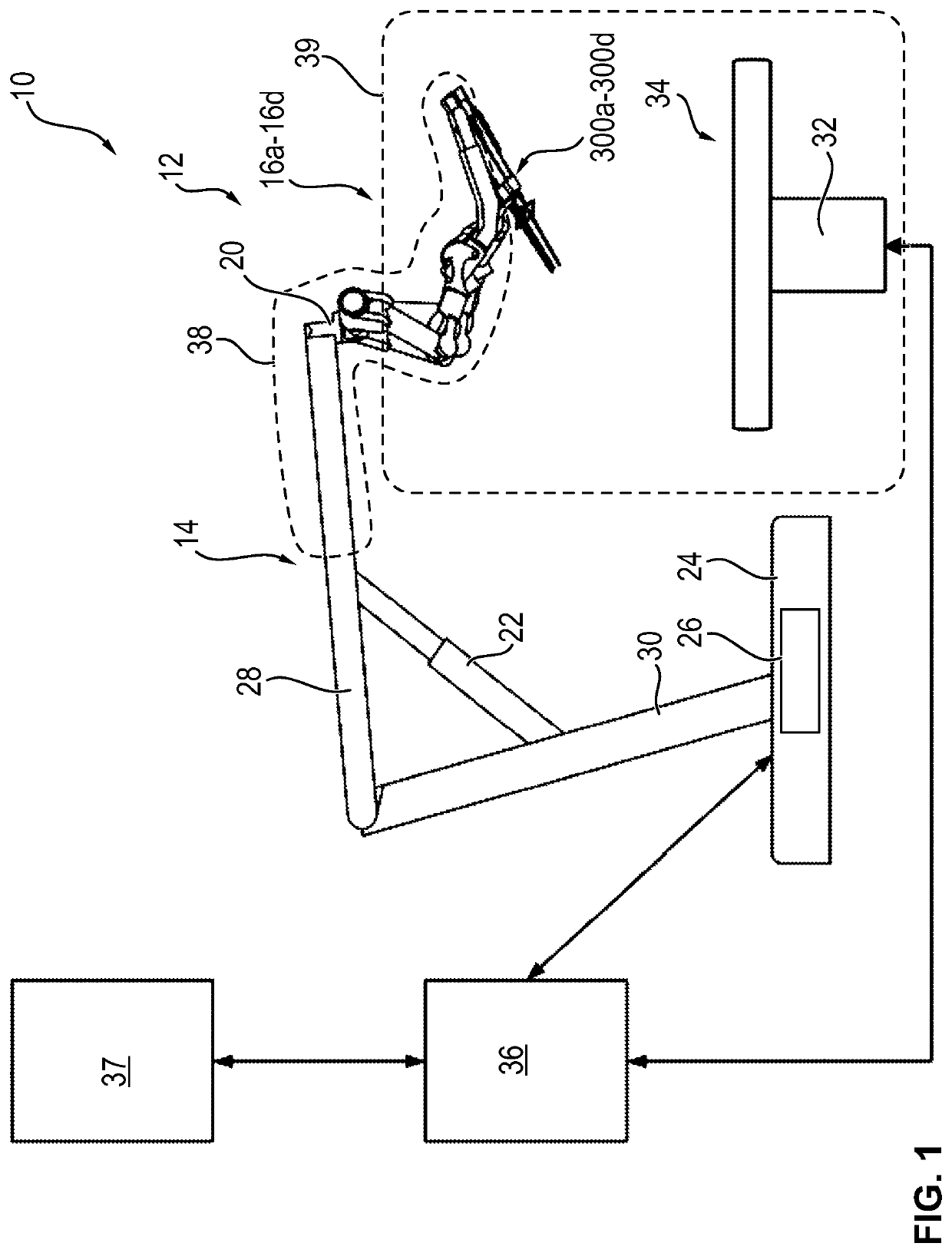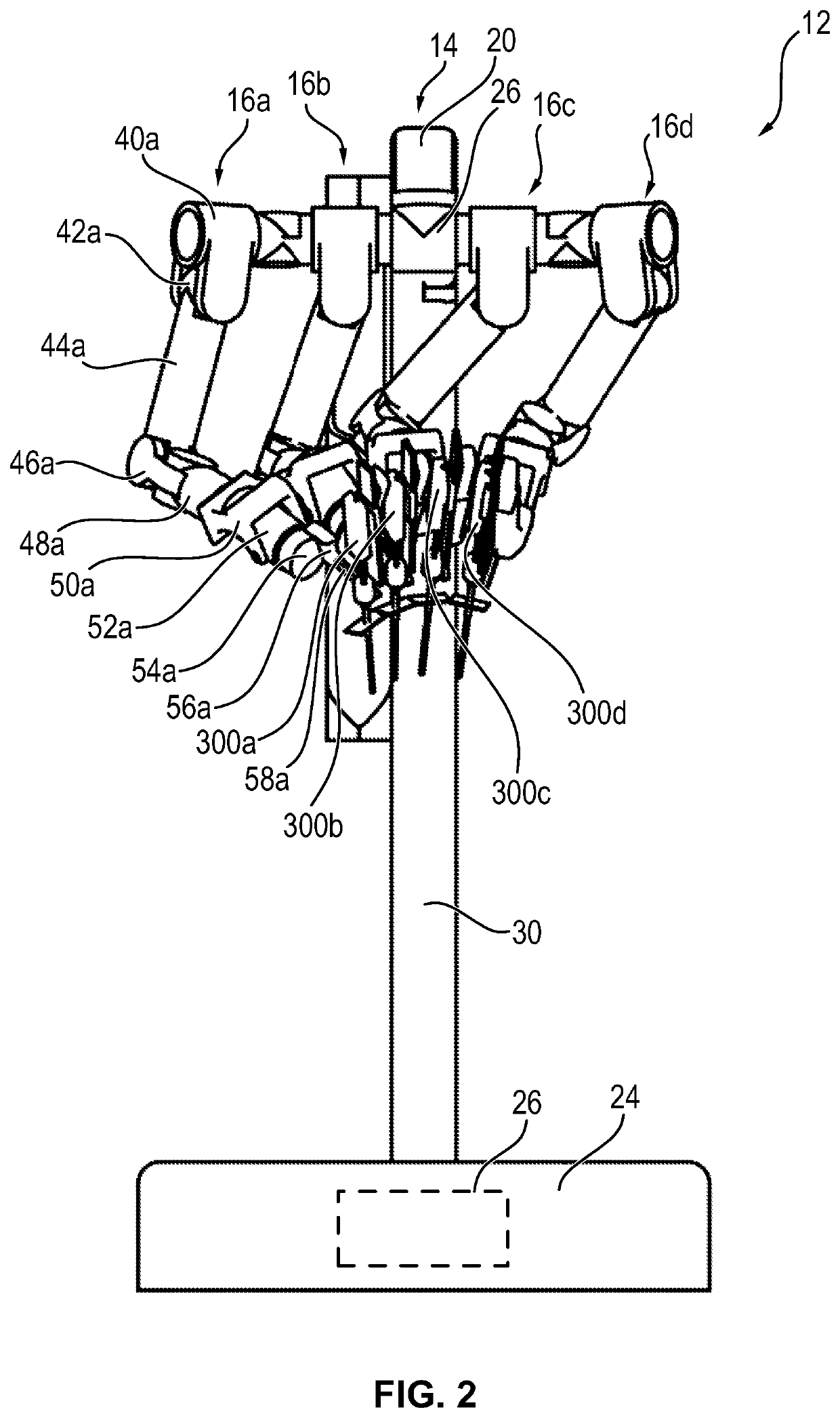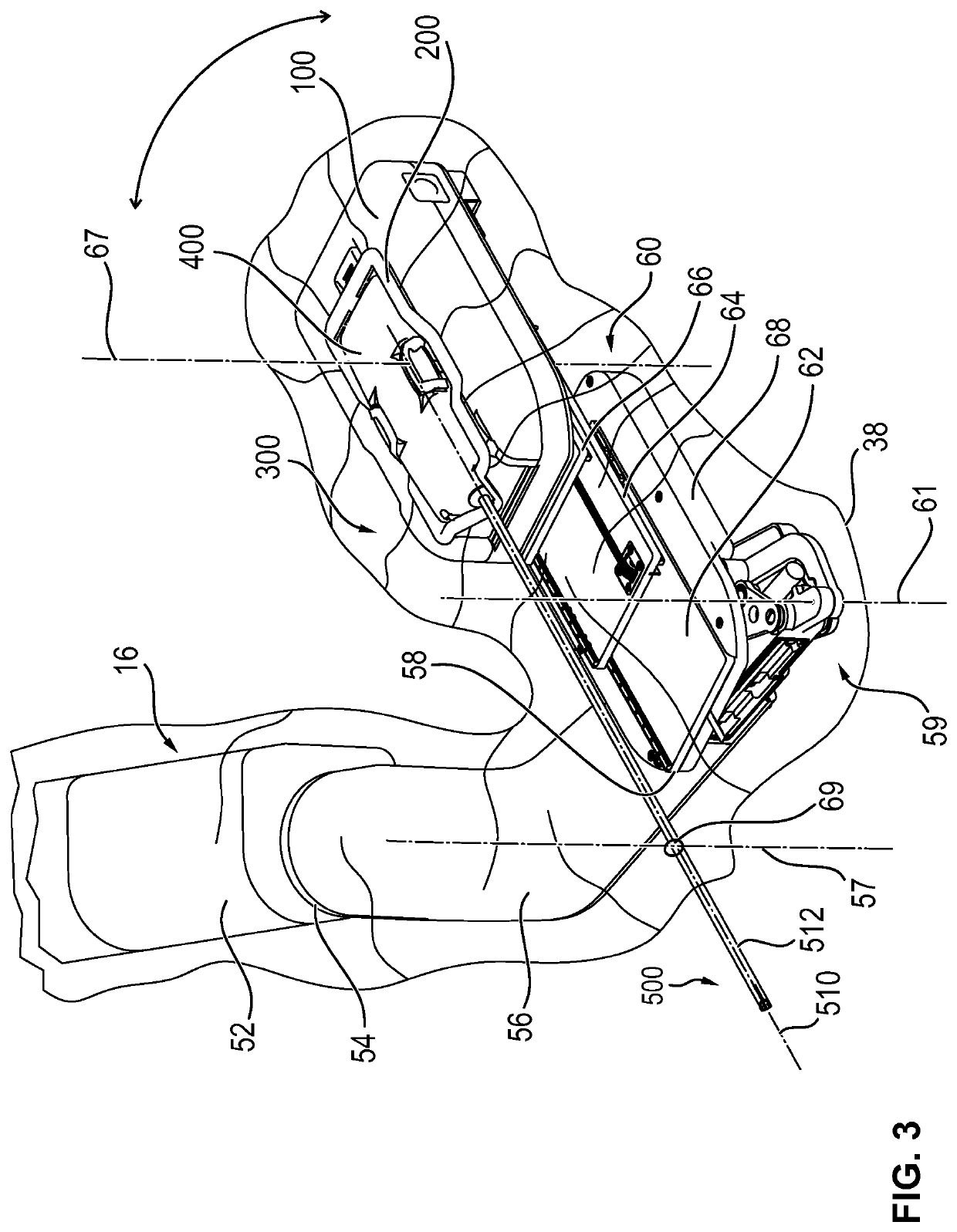Device for robot-assisted surgery
a robot and surgery technology, applied in the field of robot-assisted surgery, can solve the problems of contaminated surgical instruments and/or endoscopes, contamination of body fluids and/or tissue, contamination of material, etc., and achieve the effect of convenient and safe connection and easy handling
- Summary
- Abstract
- Description
- Claims
- Application Information
AI Technical Summary
Benefits of technology
Problems solved by technology
Method used
Image
Examples
second embodiment
[0142]FIG. 20 shows a detail of an instrument unit 1300 with a sterile unit 1400 and a surgical instrument 1500 according to a In contrast to the instrument unit 300, the sterile unit 1400 of the instrument unit 1300 has no sterile flaps but a jalousie 1410 for covering the driven elements in a sterile manner. The further structure and the function of the instrument unit 1300 corresponds to the structure and the function of the instrument unit 300 according to FIGS. 1 to 19.
[0143]FIG. 21 shows a detail of a sterile covering 1038 with a sterile lock 1200 which in contrast to the sterile lock 200 has no sterile flaps but a jalousie 1210 for shielding drive elements of the coupling unit 100 in a sterile manner. The jalousie 1410 of the coupling unit 1400 and the jalousie 1210 of the sterile lock 1200 are opened in a suitable manner by a mechanical engagement when connecting the sterile unit 1400 to the sterile lock 1200 or the sterile unit 1400 to the sterile lock 200 or the sterile u...
third embodiment
[0144]In FIG. 22, a detail of an instrument unit 2300 with a sterile unit 2400 is shown. The sterile unit 2400 has no elements for covering the driven elements in a sterile manner so that this instrument unit 2400 is immediately removed from the sterile area 39 after separation from the sterile lock 200, 1200 or after separation from a further sterile lock 2200 shown in FIG. 23.
[0145]The sterile cover 2038 shown in FIG. 23 comprises a sterile lock 2200 which is couplable to the coupling unit 100 just like the sterile unit 200. In contrast to the sterile lock 200, the sterile lock 2200 has no lock flaps but comprises a foil provided with predetermined breaking points indicated by means of dotted lines, which foil is torn open along the predetermined breaking points when connecting a sterile unit 400, 1400, 2400 to the sterile lock 2200 so that a direct coupling of the drive elements 110 to 116 of the coupling unit 100 with the driven elements 408 to 414 is easily possible. Preferabl...
PUM
 Login to View More
Login to View More Abstract
Description
Claims
Application Information
 Login to View More
Login to View More - R&D
- Intellectual Property
- Life Sciences
- Materials
- Tech Scout
- Unparalleled Data Quality
- Higher Quality Content
- 60% Fewer Hallucinations
Browse by: Latest US Patents, China's latest patents, Technical Efficacy Thesaurus, Application Domain, Technology Topic, Popular Technical Reports.
© 2025 PatSnap. All rights reserved.Legal|Privacy policy|Modern Slavery Act Transparency Statement|Sitemap|About US| Contact US: help@patsnap.com



